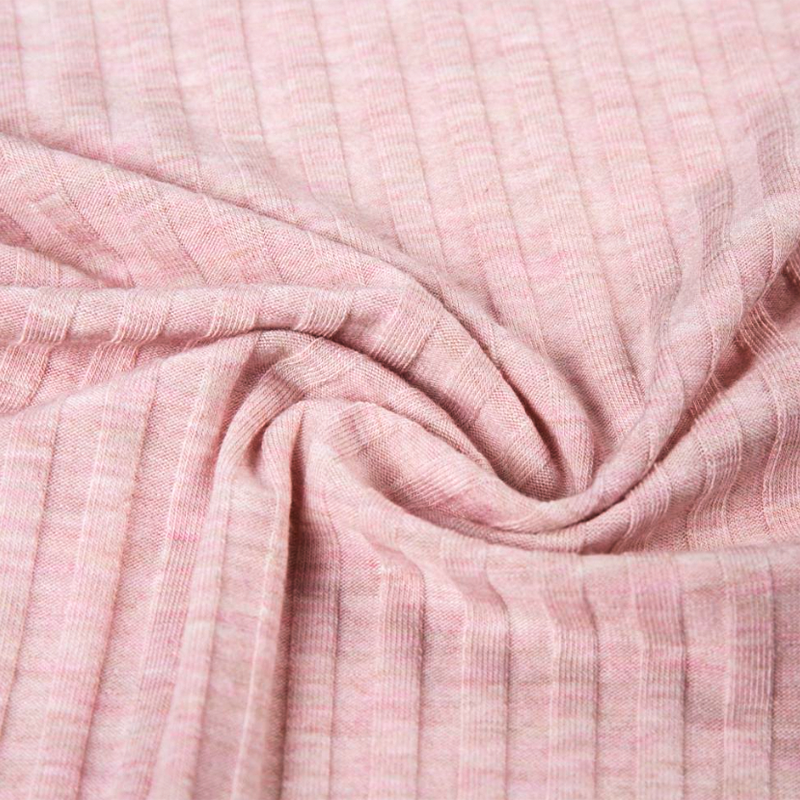Maintaining rib knit fabric to avoid deformation and shrinking requires careful attention to both fiber composition and care practices. Here are the best practices widely recommended by textile professionals and manufacturers:
1. Follow the Fiber-Specific Care Instructions:
Rib knit fabric can be made from cotton, polyester, spandex blends, wool, or viscose. Each material reacts differently to heat, moisture, and friction:
Cotton rib knits may shrink if washed or dried at high temperatures.
Synthetic blends like polyester/spandex are more heat-resistant but can deform with excessive stretching or improper drying.
Always check the care label before washing.
2. Wash in Cold or Lukewarm Water:
Use cold or lukewarm water (below 30°C/86°F) to prevent fiber contraction. Hot water can cause natural fibers like cotton or wool to shrink and lose shape.
3. Use Gentle or Delicate Cycle:
Select a gentle cycle to minimize agitation, which can stretch out the ribs or cause surface fuzzing. Excessive mechanical action may also lead to misalignment of the knit structure.
4. Avoid Heavy Loads and Friction:
Wash rib knit items with similarly soft garments to reduce abrasion. Avoid washing them with zippers, denim, or towels, which can damage the knit structure.
5. Use Mild Detergents:
Harsh detergents can break down elastic fibers (e.g., spandex), leading to reduced stretch recovery. Use a mild, pH-balanced detergent without bleach or fabric softeners.
6. Avoid Wringing or Stretching Wet Fabric:
Rib knit holds water and becomes heavy when wet. Wringing or hanging it while saturated can lead to vertical distortion. Instead, gently press out moisture using a towel.

7. Lay Flat to Dry:
To maintain the garment’s shape, reshape and lay it flat to dry on a clean, dry towel. Hanging rib knit items, especially those with weight like sweaters, can stretch the fabric vertically.
8. Avoid High Heat During Drying:
Do not tumble dry rib knit garments on high heat. If machine drying is necessary, use a low-heat or air-dry setting. Air drying is always safer for shape retention.
9. Store Properly:
Fold rib knit garments instead of hanging them to avoid stretching, especially around the shoulders. Store them in a cool, dry space to prevent mildew or fiber breakdown.
10. Minimize Ironing and Heat Exposure:
Iron only if needed and at the lowest appropriate temperature, using a press cloth. Direct heat can cause synthetic fibers to melt or warp, and can flatten the texture of ribbing.
11. Pre-shrunk or Treated Fabrics:
When sourcing or purchasing rib knit fabrics, look for pre-shrunk or heat-set options. These are treated to resist shrinkage during washing and drying.
By combining gentle care techniques and awareness of the fabric composition, you can significantly extend the life and shape retention of rib knit garments. Let me know if you'd like a care guide tailored to a specific fiber blend (like cotton-spandex or polyester-rib)!


.jpg?imageView2/2/format/jp2)




_.jpg?imageView2/2/format/jp2)



